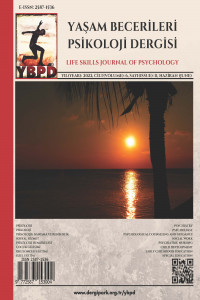Pedofiliyi Tanımak
Çocuklara yönelik erotik sevgi anlamına gelen Yunanca “pedeiktos” (çocuk) ve “philia” (sevgi) sözcüklerinden gelen pedofili (Seto, 2002), çocukların cinsel uyarım nesnesi olarak kullanılmasını içerir. Çoğu kültürde, çocuklar cinsel ilişki hakkında karar vermek için yeterince olgun olarak kabul edilmezler. Bu bağlamda, çocuk cinsel istismarı sadece tahammül edilemez olarak görülmekle kalmaz, aynı zamanda pek çok toplumda cezai yaptırıma da bağlanırr. Pedofili birçok klinisyen için tartışmalı ve hoş olmayan bir konu olarak kabul edilir; bu nedenle, çoğu klinisyen bu konuda araştırma yapmaktan kaçınır. Literatürde, pedofili için mutlak ve tutarlı bir sınıflandırma bulunmamaktadır. Aynı zamanda pedofili tanı kriterlerinin de zaman içerisinde değiştiği görülmektedir. Psikanalitik, bağlanma ve Ferenczi'nin travma teorisi gibi farklı teoriler pedofilinin nedenlerine ilişkin bazı açıklamalar önermesine rağmen, bu konu hakkında tatmin edici bir açıklama yoktur. Pedofili çok disiplinli bir meseledir ve biyo-psiko-sosyo-yasal bir müdahale planı gerektirmektedir, Pedofili konusunun ele alınmasında çeşitli disiplinlerin işbirliği ile araştırma yapması ve konuyu anlaması çok önemli ve gereklidir. Bu çalışma, farklı perspektiflerden bakılarak pedofiliyi anlama girişimidir.
Anahtar Kelimeler:
pedofili, çocuk tacizcisi, sınıflandırma, profil, DSM
Identifying Pedophilia
Pedophilia, derived from Greek words philia of pedeiktos meaning erotic love of children (Seto, 2002) includes using children as a sexual excitement object to reach gratification. In most cultures children are not deemed as mature enough to make decisions about sexual intercourse. In this regard, child sexual abuse is not only intolerable, but is also sanctioned in many societies. Pedophilia is considered a controversial and unpleasant subject for many clinicians; therefore, most of them avoid conducting research on this topic. In the literature, there is no absolute and consistent classification and also diagnostic criteria of pedophile has changed over time. Although different theories such as psychoanalytic, attachment and Ferenczi’s trauma theory propose some explanations regarding the reasons for pedophilia, there is no satisfactory elucidation about this topic. Pedophilia is a multidisciplinary concern and requires a bio-psycho-socio-legal plan for intervention, it is crucial to conduct research by collaboration of various disciplines and understand this subject is important and necessary to address this issue. This current study is an attempt to understand pedophilia by looking from different perspectives.
Keywords:
pedophilia, child molesters, classification, profile, DSM,
___
- American Psychiatric Association. (1952). Diagnostic and statistical manual of mental disorders (DSM-I). Washington, DC: Author.
- American Psychiatric Association. (1968). Diagnostic and statistical manual of mental disorders (DSM-II). Washington, DC: Author.
- American Psychiatric Association. (1980). Diagnostic and statistical manual of mental disorders (3rd ed.; DSM–III.). Washington, DC: Author.
- American Psychiatric Association. (1987). Diagnostic and statistical manual of mental disorders (3rd ed., rev.; DSM–III–R). Washington, DC: Author.
- American Psychiatric Association. (1994). Diagnostic and statistical manual of mental disorders (4th ed.; DSM–IV). Washington, DC: Author.
- American Psychiatric Association. (2000). Diagnostic and statistical manual of mental disorders (4th ed., text rev. ; DSM–IV–TR). Washington, DC: Author.
- American Psychiatric Association. (2013). Diagnostic and statistical manual of mental disorders, (Fifth Edition; DSM-V). Washington, DC: Author.
- Bahroo, B. A. (2005). Pedophilia, Psychiatric Insights. Family Court Review an Interdisciplinary Journal. 41 (4).
- Blanchard, R., Barbaree, H. E., Bogaert, A. F., Dickey, R., Klassen, P., Kuban, M. E. and Zucker, K. J. (2000). Fraternal birth order and sexual orientation in pedophiles. Archives of Sexual Behavior, Vol. 29, No. 5. Doi: 10.1023/A:1001943719964
- Bogaert, A. F., Kuban, M., Blanchard, M. (1997) Pedophilia, sexual orientation, and birth order. Journal of Abnormal Psychology 106:2, 331-335. doi: 10.1037//0021-843X.106.2.331
- Campbell, D. (2014). Doubt in the psychoanalysis of a paedophile. The International Journal of Psychoanalysis, 95: 441-463. doi: 10.1111/1745-8315.12196
- Fagan, P. J., Wise, T. N., Schmidt, C. W., & Berlin, F. S. (2002). Pedophilia. The Journal of the American Medical Association. 288 (19): 2458-65.
- Frankel, J. (2002). Exploring Ferenczi's concept of identification with the aggressor: Its role in trauma, everyday life, and the therapeutic relationship. Psychoanalytic Dialogues, 12:101-139.
- Glasser, M. (1988). Psychodynamic aspects of paedophilia. Psychoanalytic Psychotherapy, 3 (2): 121-135, doi:10.1080/02668738700700111
- Howell, E. F. (2014). Ferenczi’s concept of identification with the aggressor: understanding dissociative structure with interacting victim and abuser self-states. The American Journal of Psychoanalysis, 74: 48–59.
- Scarfone, D. (2014). The three essays and the meaning of the infantile sexual in psychoanalysis. The Psychoanalytic Quarterly, Volume LXXXIII, Number 2: 327-344.
- Seto, M. C. (2002). Pedophilia and sexual offending against children. Washington DC: American Psychological Association.
- Seto, M. C. (2010). Child pornography use and internet solicitation in the diagnosis of pedophilia. Archives of Sexual Behavior, 39: 591–593. DOI 10.1007/s10508-010-9603-6
- Seto, M. C., Cantor, J. M., Blanchard, R. (2006). Child pornography offenses are a valid diagnostic indicator of pedophilia. Journal of Abnormal Psychology. 115 (3): 610-615. Doi: 10.1037/0021-843X.115.3.610
- Strassberg, D. S., Eastvold, A., Kenney, J. W., & Suchy, Y. (2012). Psychopathy among pedophilic and nonpedophilic child molesters. Child Abuse & Neglect, 36: 379-382. doi:10.1016/j.chiabu.2011.09.018
- Turner, D., Rettenberger, M., Lohmann, L., & Eher, R. (2014). Paedophilic sexual interests and psychopathy in child sexual abusers working with children. Child Abuse & Neglect, 38: 326- 335. doi:10.1016/j.chiabu.2013.07.019
- ISSN: 2587-1536
- Başlangıç: 2017
- Yayıncı: Muhammed YILDIZ
Sayıdaki Diğer Makaleler
Ergenlerin Öz-Yeterlik ve Mükemmeliyetçi Öz-Sunum Düzeyleri Arasındaki İlişkinin İncelenmesi
Esra Nihan BRİDGE, Nesrin DUMAN
Öfke Atakları ile Depresyon Arasındaki İlişkinin İncelenmesi
Ölçüsüz Ekran Tabanlı Medya Kullanımının Erken Çocukluk Gelişimi Üzerine Etkileri: Kısa Bir İnceleme
Yunus PINAR, Fatma ÜNAL, Nihal KUBİLAY PINAR
İşyerinde Deneyimlenen Eğlencenin Pozitif Bireysel ve Örgütsel Çıktılara Etkisi
Yaşlı Bireylerde Yaşanılan Yer ile Yalnızlık Durumu Arasındaki İlişkinin Araştırılması
Asuman SALTAN, Mümine KALINDEMİRTAŞ KÜÇÜK, Selda MERT BOĞA
Yeme Bozukluğu Vakalarında Hastalık Yaşantısı ve Grup Süreci: Nitel Bir Çalışma
F. Elif ERGÜNEY OKUMUŞ, Nur BAŞER BAYKAL, Ezgi DEVECİ, Selin KARAKÖSE
